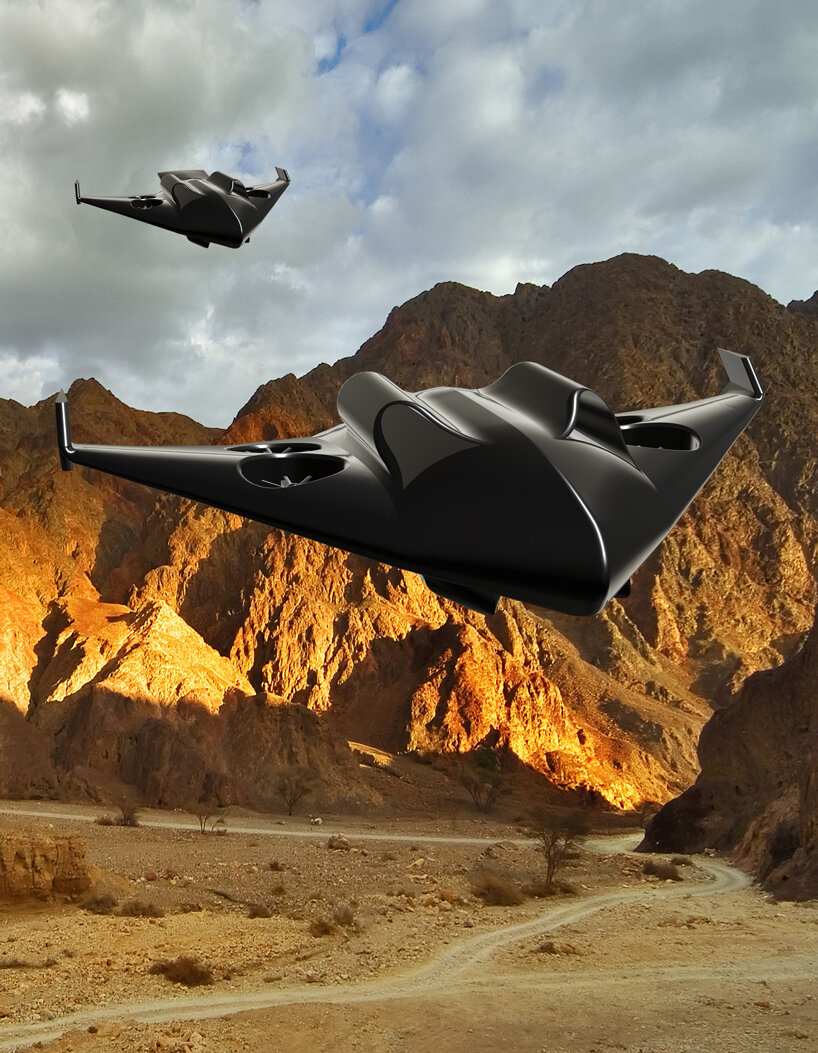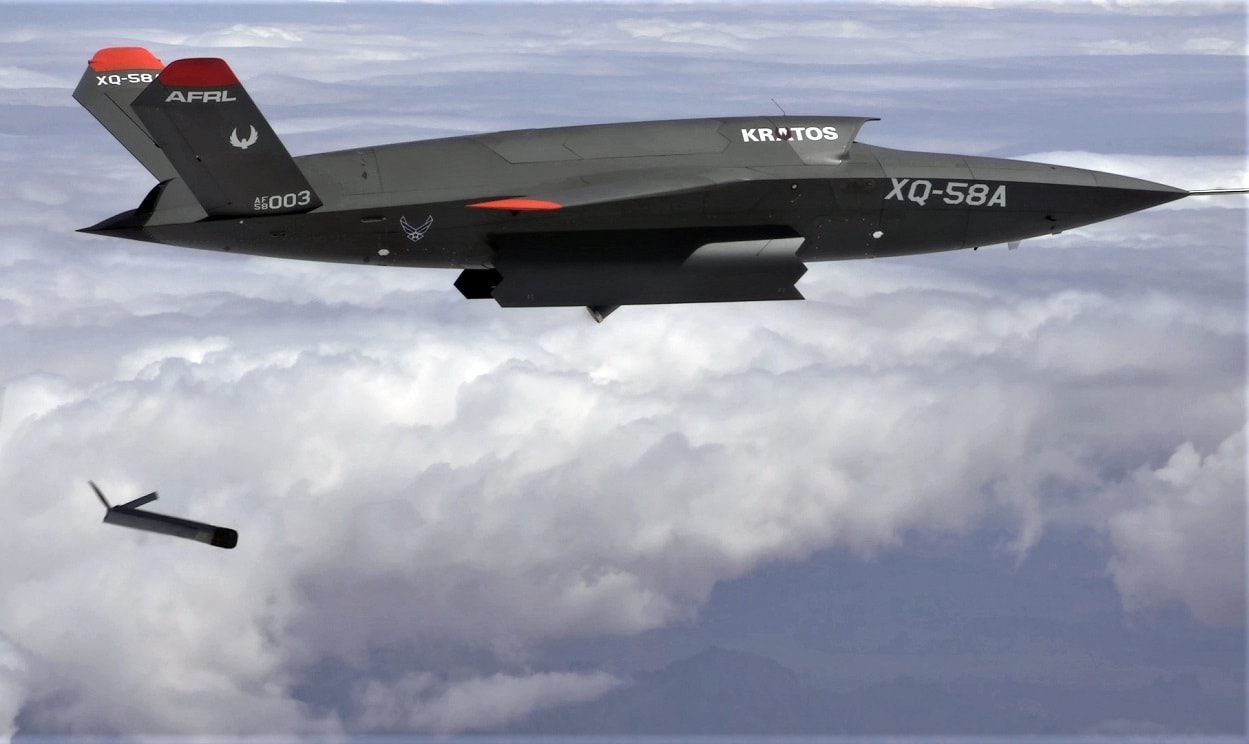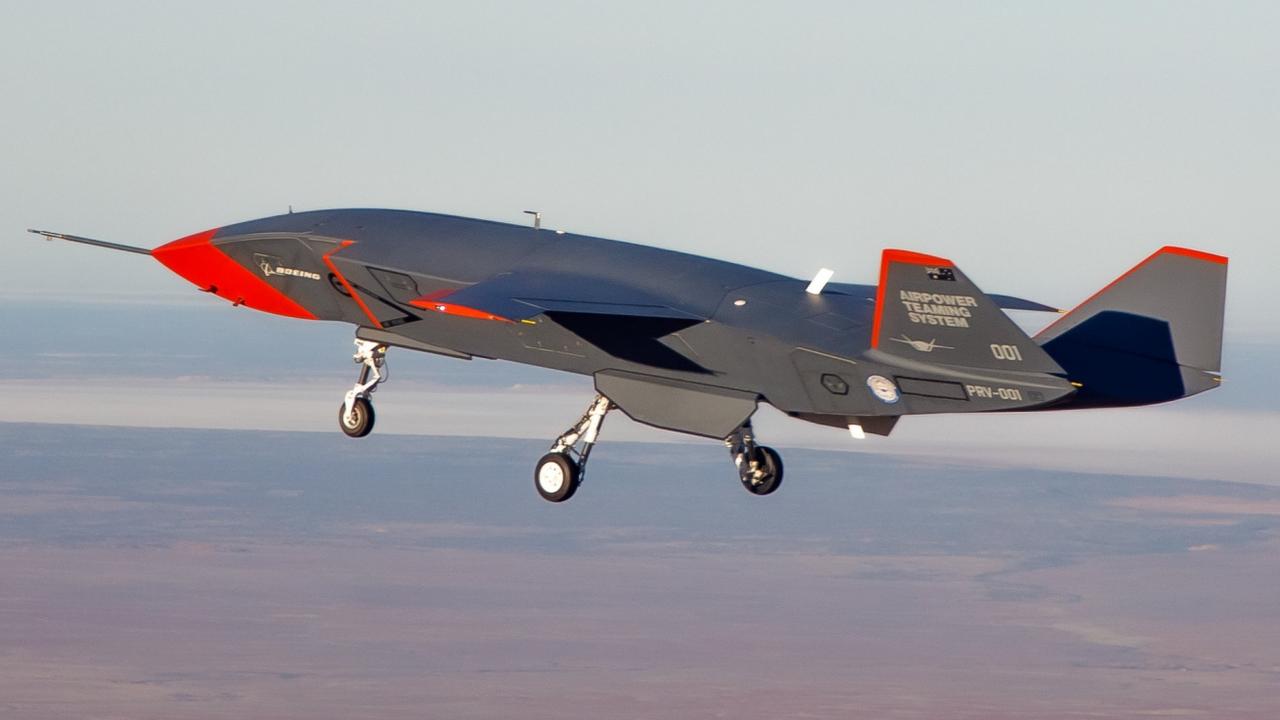Valkyrie Stealth Drone - Key Points: The US wants stealth combat drones it can launch from carriers and the XQ-58 program is a step in that direction.
The XQ-58 Valkyrie took off for its second test flight on June 11, 2019, over Yuma, Arizona. The 29-foot-long, jet-powered drone "successfully accomplished all test objectives during its 71-minute flight," the Air Force Research Laboratory announced.
Valkyrie Stealth Drone

The first flight of Valkyrie took place in March 2019. The Air Force and California drone maker Kratos plan to conduct five types of tests during this phase of XQ-58's development.
China Unveils 'loyal Wingman' Armed Drone Concept
The Valkyrie is part of a broader Air Force effort to acquire fast, stealthy, armored drones that can fly and fight alongside manned combat aircraft.
While the Valkyrie program is developing one type of winged drone, the broader Skyborg program is working on hardware and software to integrate manned and unmanned combat aircraft.
A new version of the Air Force's F-35A stealth fighter, as well as an upgraded version of the F-15 that the aviation branch hopes to acquire, will both serve as the service's wingman drone, Will Roper, flying for the Air Force. Can main arms buyer said
Insinna reported that the Air Force is in discussions with Boeing and Lockheed, respectively, to modify their F-15EX and F-35A Block 4 fighters to accommodate the data links and processors from the Skyborg effort.
Sky High Future
Roper confirmed that the Air Force would eventually divert the XQ-58 subsonic to the Skyborg program. The Air Force plans to test the winged drone in 2019 and 2020 "with the hope of having an aircraft ready by 2023," Incinna wrote.
Roper told Insinna that pairing manned fighters with drones "could open the door to a completely different way of fighting in the air."
"For example, take a typical four-aircraft formation and replace it with an F-15EX and three Valkyries," Incinna explained.
"We can afford to take risks with some systems in order to keep others safe," Roper said. "We can separate the sensor and the shooter. At the moment they are co-located with a person on a platform. In the future, we can separate them, put sensors in front of snipers, put our manned systems in front of unmanned ones." Can put that behind. There's a whole playbook."
Top 10 Combat Drones In The World
Pilots and crew in manned aircraft and controllers on the ground can direct winged drones. But unmanned aerial vehicles themselves can be highly autonomous.
According to Kratos, the XQ-58's capabilities "range from the semi-autonomous low side (operator guided, fixed autopilot) to the semi-autonomous side (waypoint nav). The system includes standard interfaces to enable full autonomy." "
The flight tests of the XQ-58 signal an expansion of international efforts to develop unmanned aerial vehicles capable of flying and fighting in mixed formations with manned warplanes.
In February 2019, Boeing's Australian subsidiary unveiled its "AirPower Teaming System", a 38-foot-tall, jet-powered drone that the company says can carry weapons and sensors and deliver up to 2,000 Can fly for miles. More affordable than a $100 million manned jet.
Australian Fighter Sized Uas Unveiled
Boeing has developed a new drone in collaboration with the Australian Army. After further development, the Royal Australian Air Force could obtain the UAV quickly and cheaply to add firepower to its nearly 100-strong fleet of fighters and six E-7 radar aircraft.
"The Boeing AirPower Team system is designed to be incorporated into a wide range of existing military aircraft, from fighter jets to commercial derived aircraft," said Ashley Irwin, a Boeing spokeswoman.
Apart from Australia, China and Japan are also working on wingless drones. A mockup or prototype of China's 30-foot Dark Sword drone first appeared publicly in mid-2018 in an undated photo that circulated online.

, "The idea of the robotic wingman is that it can keep up with manned aircraft, but be tasked with parts of the mission that you wouldn't send a human teammate to do." An XQ-58A Valkyrie demonstrates the separation of the ALTIUS-600 small unmanned aircraft system during a test on March 26, 2021 at the US Army's Yuma Proving Ground, Ariz. The test was the first time the Bay Door weapon was opened. In flight (Photo courtesy of the US Air Force)
Robotic Fighter Jets Could Soon Join Military Pilots On Combat Missions. Here's Why
What will happen when fighter pilots get a new unmanned wingman? That's where the XQ-58A Valkyrie comes in.
Valkyrie is the Air Force's unmanned combat aerial project involving artificial intelligence. Valkyrie has an internal brain called the "Skyborg", which controls the drones and helps the manned fighter-bombers do their jobs more effectively and efficiently.
Breaking Defense describes the Skyborg as an artificial brain that "will provide data such as telemetry, flight planning and weather, which a manned wing aircraft would normally provide." The Valkyrie, with the "loyal wingman" team architecture of the Skyborg program, can sometimes fly ahead of formation and track enemy targets for its manned wingmen. This allows its human brethren to launch and bombard safely inert missiles.
The Valkyrie, part of the Air Force Research Laboratory's Low Cost Assigned Aircraft Technology (LCAAT) portfolio, is a stealthy aircraft that is difficult to track on radar. But it can be expended if shot down, and this reduces the chances of a surviving pilot being taken prisoner after ejecting.
Dron Pengiring Kratos Xq 58a Valkyrie Berjaya Melakukan Penerbangan Pertama
The low maintenance drone is launched from a shipping container which makes the launcher very mobile. This container launch means the Valkyrie doesn't need a runway, so all possibilities for battlefield use are imaginable as existing military trucks can transport it from one location to another. Valkyrie is then recovered by parachute, again without the need for a runway. Top speed is 652 mph.
It can carry four Direct Attack Weapon bombs internally and the aircraft has a range of at least 2,000 miles.
The Valkyrie is the fruit of a rapid procurement process – just 2.5 years after the contract was awarded for the prototype and flight testing. Originally a $37.7 million contract, the first flight was in spring 2019, and by 2020 it had flown on four tests. Defense contractor Kratos Defense & Security Solutions wants production units to be delivered to the Air Force this year.

Consider Valkyrie's role as the concept of parent and child. The parent is an F-22 or F-35 and the child is piloted and controlled by the Skyborg system. It can feed targeting data and perform intelligence, surveillance and reconnaissance or bomb-dropping roles. Valkyrie's second role might be to assess bomb damage and transmit that data to command and control aircraft or directly to its manned wingmen.
Valkyrie Stealth Drone: How To Make F 22 And F 35s Even Deadlier
The Loyal Wingman concept is cool and Russia has plans for its own concept with the fifth generation Su-57 along with the S-70 Okhotnik-B drone. So, it makes sense that the US Air Force has its own Wingman model.
The real test will be to see how well Cyborg's artificial intelligence systems can integrate and "talk" to America's stealth warplanes. The Skyborg carries its own antenna radio system to receive this type of communication. Will F-35 and F-22 pilots be able to fly their aircraft and control loyal wingmen at the same time? He learns that in training, the Valkyrie will focus on more test flights and integration to understand the concept of the loyal wingman.
Now serving as the new 1945 Defense and National Security Editor, Brent M. Eastwood, PhD, is the author of Humans, Machines, and Data: Future Trends in Warfare. He is an Emerging Threats expert and former US Army Infantry officer. The Kratos XQ-58 Valkyrie is an experimental unmanned combat aerial vehicle (UCAV) designed and built by Kratos Defse & Security Solutions for a Low-Cost Strike Demonstrator Award for the United States Air Force. (LCSD), under the USAF Research Laboratory's Low Cost Attributable Aircraft Technology (LCAAT) project portfolio. It was initially designated XQ-222. Valkyrie successfully completed its maiden flight on 5 March 2019 at Yuma Proving Ground, Arizona.
The XQ-58 Valkyrie belongs to the USAF Research Laboratory's Low Cost Assigned Aircraft Technology (LCAAT) portfolio, whose objectives include faster design and manufacture of unmanned combat air vehicles (UCAVs) by developing better design tools and to reduce Taking advantage of mature and professional manufacturing processes. Construction time and cost.
Russia's S 70 Stealth Drone Could Change The Game
The role of the LCAAT is to escort the F-22 or F-35 during combat missions and be able to deploy weapons or surveillance systems.
The XQ-58 is designed to act as a "loyal wingman", controlled by part of an aircraft to perform tasks such as scouting, defensive fire, or absorbing EMI fire when attacked. Is.
It features stealth technology with trapezoidal fuselage with chin edge, V tail and S-shaped air intakes.

The XQ-58 can be used as part of a swarm of drones, with or without direct pilot control. Although the XQ-58 is capable of conventional takeoff and landing, it can also be launched from "nondescript launch modules", such as support ships, shipping containers, and semi-trailer trucks.
Israel Asks Industry To Develop New Long Range, Stealthy Armed Drones
The first flight of the XQ-58 took place on 5 March 2019, almost two and a half years after the contract was awarded. A total of five test flights were planned over two phases to evaluate the system's functionality, aerodynamic performance and launch and recovery systems.
On 23 July 2020, the Air Force awarded contracts to Kratos, Boeing, Northrop Grumman and General Atomics to authorize companies
Valkyrie drone, avier stealth drone, stealth drone for sale, stealth fighter drone, best stealth drone, navy stealth drone, stealth drone, x 47b stealth drone, stealth drone with camera, valkyrie drone camera, stealth combat drone, protocol galileo stealth drone

0 Comments